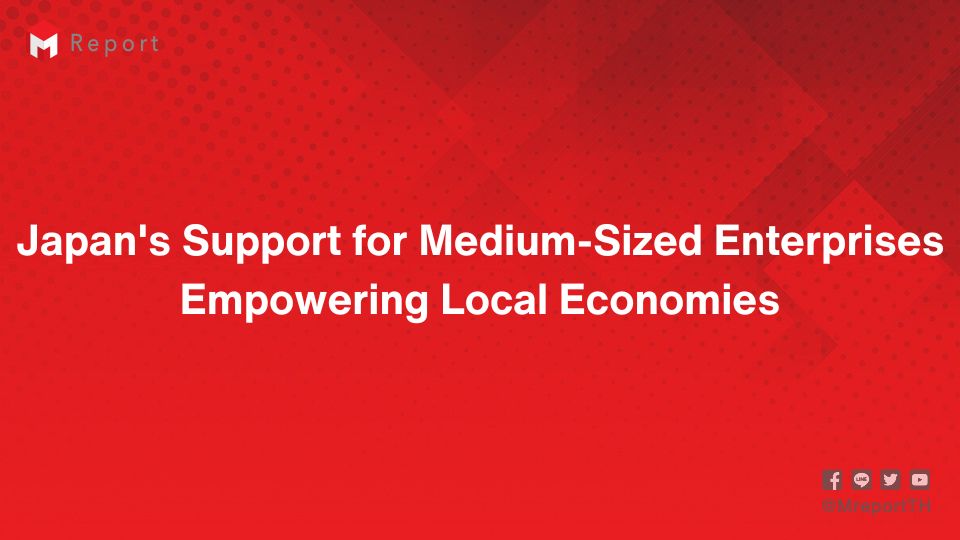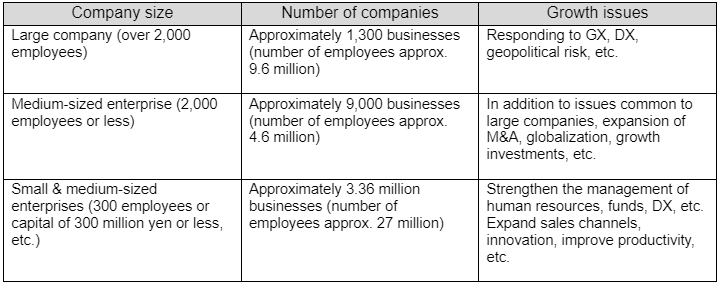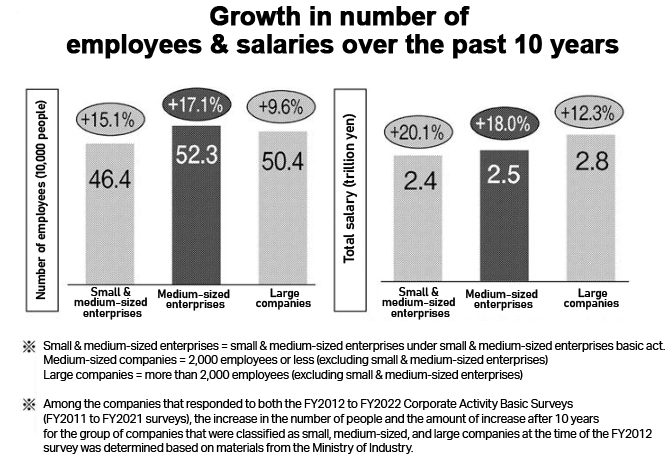
Japan's Support for Medium-Sized Enterprises: Empowering Local Economies
In 2024, the Japanese government designated it as the "first year of medium-sized enterprises," intending to boost support, investment, and wage hikes for this vital sector.
apan, April 5, 2024 - The government will clearly define mid-sized companies by law and encourage growth through preferential treatment for domestic investment and M&A (mergers and acquisitions). Mid-sized companies have set up bases in rural areas, contributing to regional investment and rising wage levels, thus raising industrial competitiveness with mid-sized companies as growth drivers. (3-part series)
"I once again felt strongly that medium-sized companies are the key to revitalizing Japan." In mid-March, Minister of Economy, Trade, and Industry Takeshi Saito made the following remarks during a visit to Fukushima Galilei, which manufactures and sells commercial freezers and other products. The company is a mid-sized company headquartered in Osaka. They will grow through new business development via M&A centered on the food business and are committed to raising wages by 11% for all employees over the two years of 2023 and 2024.
The Ministry of Economy, Trade, and Industry (METI) aims to pass a revised bill to the Industrial Competitiveness Enhancement Act, which defines medium-sized companies as those with 2,000 or fewer employees, located between large companies and small and medium-sized companies, during the current regular session of the Diet.
Definition of SMEs and Growth Issues

Based on the tendency for companies to significantly increase productivity when the number of employees exceeds 2000, the government decided on criteria to draw the line between large and medium-sized companies. Approximately 9000 businesses nationwide, including some listed companies, will be targeted. The aim is to clarify the definition of mid-level companies, enhance policies for them, and bring out their growth potential.
In Japan, small and medium-sized enterprises are clearly defined by the number of employees and capital under the Small and Medium Enterprise Basic Act, but there is no medium-sized enterprise category. As a result, mid-sized companies were legally categorized as “large companies,” the same as large companies with high market capitalization such as Toyota Motor Corporation, and were forced to operate their businesses with fewer financial and human resources than large companies. In Asia, South Korea, and Taiwan have been promoting mid-tier policies since the 2020s.
Many of Japan’s mid-sized companies have their head offices and factories in rural areas and are the backbone of local economies. According to a survey by the Ministry of Economy, Trade, and Industry, domestic capital investment has increased by 37.5% to 1.5 trillion yen, significantly exceeding that of large companies.
Looking at the growth rate of total salaries over the past 10 years, large companies have seen an increase of 12.3%, while mid-sized companies have increased by 18%, exceeding the performance of large companies. Many companies have successfully expanded their business through domestic investment and are supporting local employment with salary levels comparable to large companies.

On the other hand, there is a gap in sales and net profit margins per company between large and medium-sized companies, and the percentage of companies that have grown from medium-sized to large companies is also low compared to Europe and the United States. "For medium-sized companies that have grown from small to medium-sized companies, supporting growth investment and M&A is essential," said an official at the Ministry of Economy, Trade, and Industry.
A medium-sized company that has achieved growth with its strategies and supported the local economy even when policy support was weak. A leap forward for mid-level employees will directly lead to the government’s goal of achieving sustainable wage increases, including in local areas. The question is whether they can take advantage of the “first year of medium-sized companies” and create an environment that supports the further growth of medium-sized companies by involving local governments and regional financial institutions.






